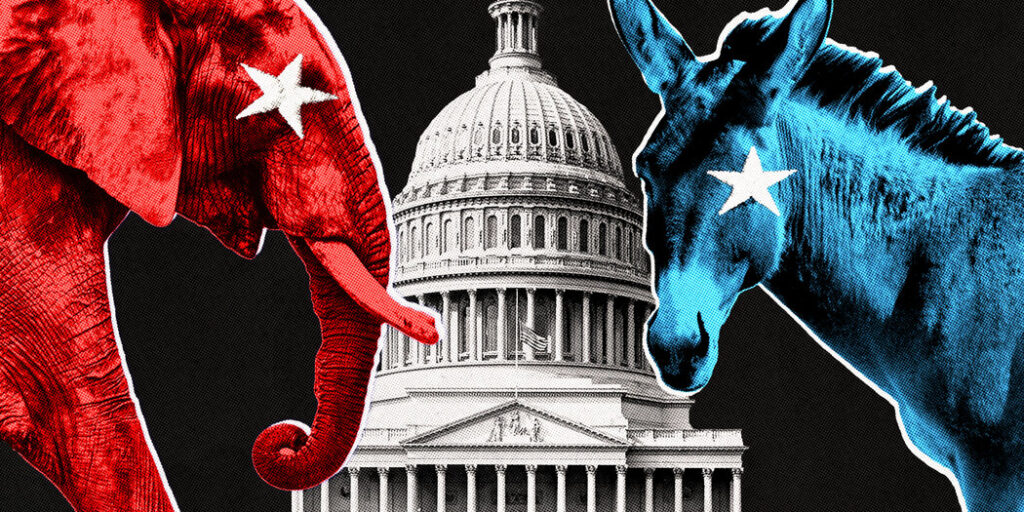Scarcity of Competition Shapes Election Uncertainty
As the election approached, only 27 House districts were identified as competitive by the Cook Political Report, with other forecasters listing even fewer. Ultimately, the limited competition expected was indeed reflected in the results.
Out of all districts, merely 37 — 22 secured by Democrats and 15 by Republicans — were decided by a slim margin of five percentage points or less, with only 19 of these districts switching party control.
Conversely, over 80% of the districts, including 169 won by Democrats and 198 by Republicans (constituting 90% of the GOP’s House majority), were decided by a comfortable margin of at least 10 percentage points. Many of these districts were not just secure but exceedingly so.
In conclusion, nearly 60% of House districts — 112 held by Democrats and 132 by Republicans — saw winners triumph by a margin of 25 or more percentage points. These districts are so secure that only an unprecedented electoral upheaval could alter their outcomes. Remarkably, there were 55 districts where candidates won by 40 to 50 percentage points, outnumbering the 37 districts where outcomes were settled by five points or fewer.
To be fair, this lack of competition isn’t solely a result of district boundary manipulations. Certain regions are deeply partisan, making it challenging to design competitive districts even with unbiased map drawing. However, the authority over map drawing did influence outcomes.
For instance, consider the low competitiveness in districts mapped by Republican-led governments. Republicans drew 184 districts — 42% of all congressional districts — more than any other map makers. The Republican-controlled states include booming Southern states with diverse “purplish” suburbs that often anchor competitive districts in states like California, Nebraska, and New York. Before the latest redistricting, Southern suburbs in states like Georgia and Texas were among the most contested areas.
However, using the maps revised post-2020 census, states where Republicans drew the lines had only 8 districts with a margin of five percentage points or fewer. In 2024, just 4% of districts in these states saw close contests.
In contrast, independent commissions, responsible for drawing only 82 of the 435 House districts, oversaw 12 competitive districts. Proportionally, states with independent commissions had over three times the number of competitive districts compared to those drawn by Republicans.
Regional and party differences in competitive elections are also notable. In the South, where Republicans controlled nearly all redistricting, only 2 out of 111 districts were decided by less than 10 points, and just 1 district in Virginia, redrawn by court order, was decided by less than 5 points. In contrast, 75 of these 111 Southern districts were decided by super-safe margins of 25 points or more.
This pattern is consistent with the outcomes in 2020 and 2022 under different conditions and maps. Ironically, by creating numerous ultra-safe GOP districts, Republicans may have limited their 2024 victories.
This year, Republicans secured slightly more national votes in House races than in 2022 but ended up with a reduced majority. One reason for this discrepancy is the way Republicans gerrymandered in the last redistricting round.
Consider Texas, where Republicans faced a progressively Democratic electorate due to increasing diversity and political shifts in its fast-growing suburbs. In 2018, Democrats unexpectedly flipped two suburban districts, and Senate challenger Beto O’Rourke nearly defeated Republican Ted Cruz.
To counter these trends, Republican map drawers in Texas aimed to protect GOP incumbents rather than target Democratic seats. They packed Republican voters into districts guaranteeing overwhelming GOP wins, reducing competitive swing districts. While this strategy secured Republican incumbents, it also made Democratic seats safer.
This cautious approach might eventually assist Democrats in reclaiming the House, as it blunts the size of Republican majorities.
Despite the abundance of safe districts, the hopeful news for Democrats is that there are enough competitive districts to pursue multiple paths to regain a majority, especially if future elections mirror Democratic successes of 2018 or 2020 rather than the pro-Republican 2024.





